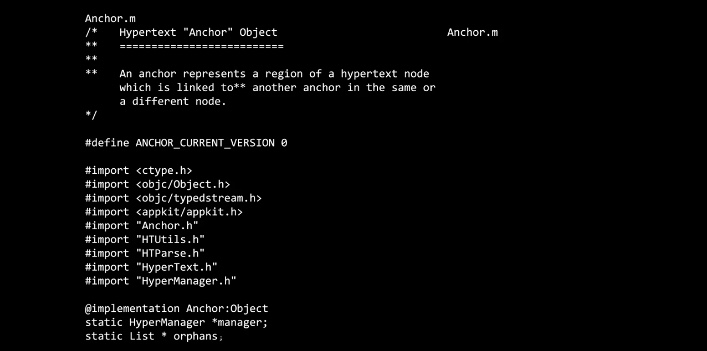
The code for the first ever web browser is to be offered as a NFT. The DNA of the World Wide Web, written in 1989, is being put up for auction by its inventor Tim Berners-Lee in aid of the British computer scientist’s charitable initiatives.
The NFT, auctioned by Sotheby’s with a starting price of £1,000, will feature the original time-stamped files containing the source code written by Berners-Lee; an animated visualisation of the code; and a digital ‘poster’ of the full code created by Berners-Lee from the original files using Python including a graphic of his physical signature; all digitally signed.
Alongside these the inventor has written a letter to the winning bidder reflecting on his vision for what would become the modern internet. In it he writes ‘It has been fun to go back and look over the code. It is amazing to see the things that those relatively few lines of code, with a help of an amazing growing gang of collaborators across the planet, stayed enough on track to become what the web is now. I have never once felt I could relax and sit back – as the web was and is constantly changing. It is not yet the best it can be: there is always work to be done!’

Berners-Lee published the first website, which described the project itself, on 20 December 1990. The site provided an explanation of what the World Wide Web was, and how people could use a browser and set up a web server, as well as how to get started with your own website.
It was powered by the code Berners-Lee wrote a year previous which ran to 9,555 lines, and included the three languages and protocols that remain fundamental to the World Wide Web today: HTML (Hypertext Markup Language), HTTP (Hypertext Transfer Protocol), and URIs (Uniform Resource Identifiers).
‘I had to take the hypertext idea and connect it to the Transmission Control Protocol and domain name system ideas and – ta-da! – the World Wide Web’ Berners-Lee reflected. ‘I just had to put them together. It was a step of generalising, going to a higher level of abstraction, thinking about all the documentation systems out there as being possibly part of a larger imaginary documentation system’.